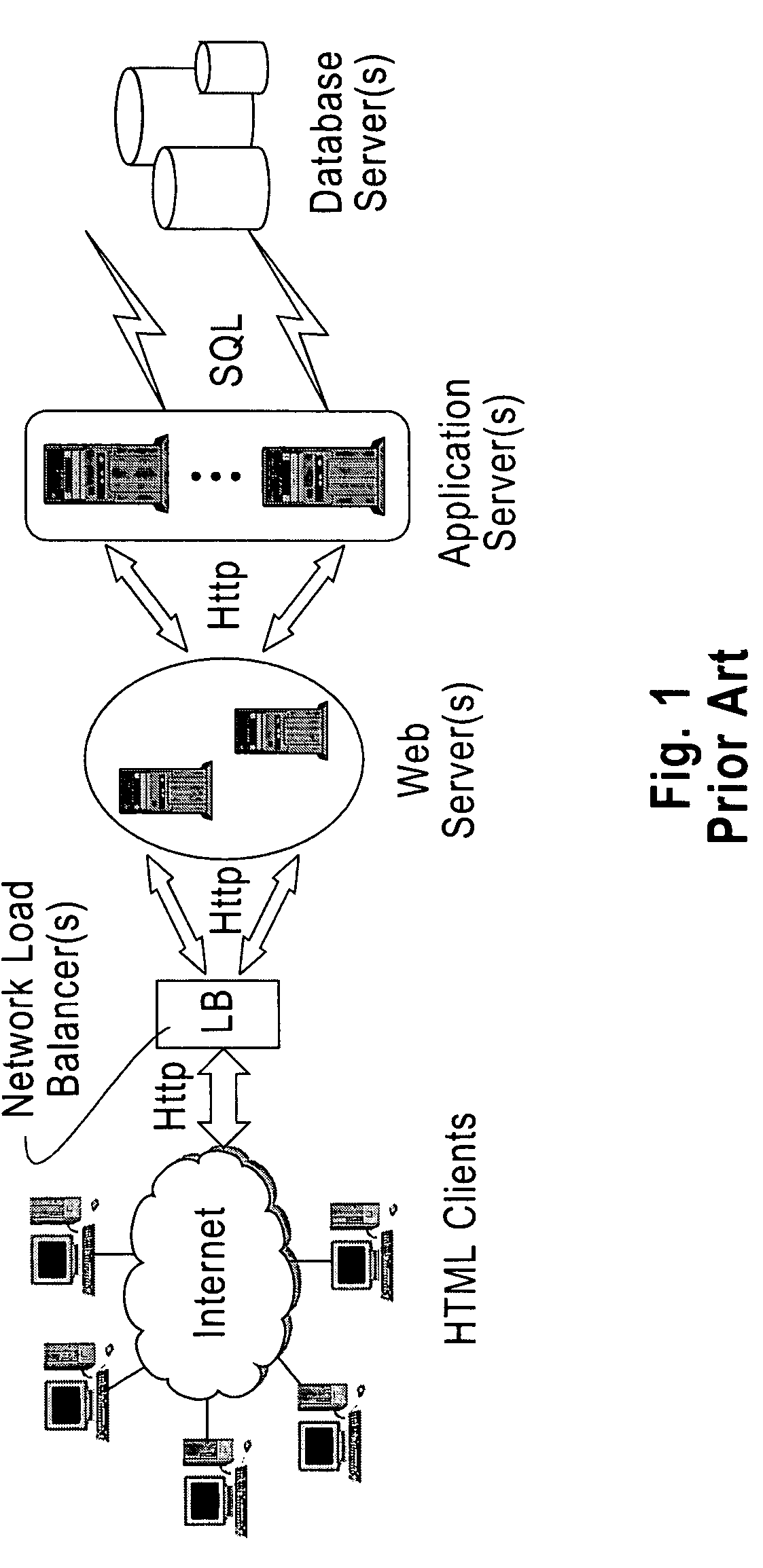System and method for adaptive database caching
a database and database technology, applied in the field of database caching, can solve the problems of low reusability of generated web pages, affecting response time and scalability, static html caching techniques becoming less useful in supporting the delivery of high volumes of frequently updated information, etc., and achieve the effect of “correctness” of query results
- Summary
- Abstract
- Description
- Claims
- Application Information
AI Technical Summary
Benefits of technology
Problems solved by technology
Method used
Image
Examples
Embodiment Construction
[0027]While this invention is illustrated and described in a preferred embodiment, the invention may be produced in many different configurations. There is depicted in the drawings, and will herein be described in detail, a preferred embodiment of the invention, with the understanding that the present disclosure is to be considered as an exemplification of the principles of the invention and the associated functional specifications for its construction and is not intended to limit the invention to the embodiment illustrated. Those skilled in the art will envision many other possible variations within the scope of the present invention.
[0028]Referring now to FIG. 2, a schema setup diagram of the present invention is shown. Cache schema 202 elements are created and named to mirror backend tables 212, 214 in a user schema of a backend database. Additionally, columns in cache table 204 elements are identical in number and type as columns in counterpart backend tables 212. As a result, c...
PUM
 Login to View More
Login to View More Abstract
Description
Claims
Application Information
 Login to View More
Login to View More - R&D
- Intellectual Property
- Life Sciences
- Materials
- Tech Scout
- Unparalleled Data Quality
- Higher Quality Content
- 60% Fewer Hallucinations
Browse by: Latest US Patents, China's latest patents, Technical Efficacy Thesaurus, Application Domain, Technology Topic, Popular Technical Reports.
© 2025 PatSnap. All rights reserved.Legal|Privacy policy|Modern Slavery Act Transparency Statement|Sitemap|About US| Contact US: help@patsnap.com



